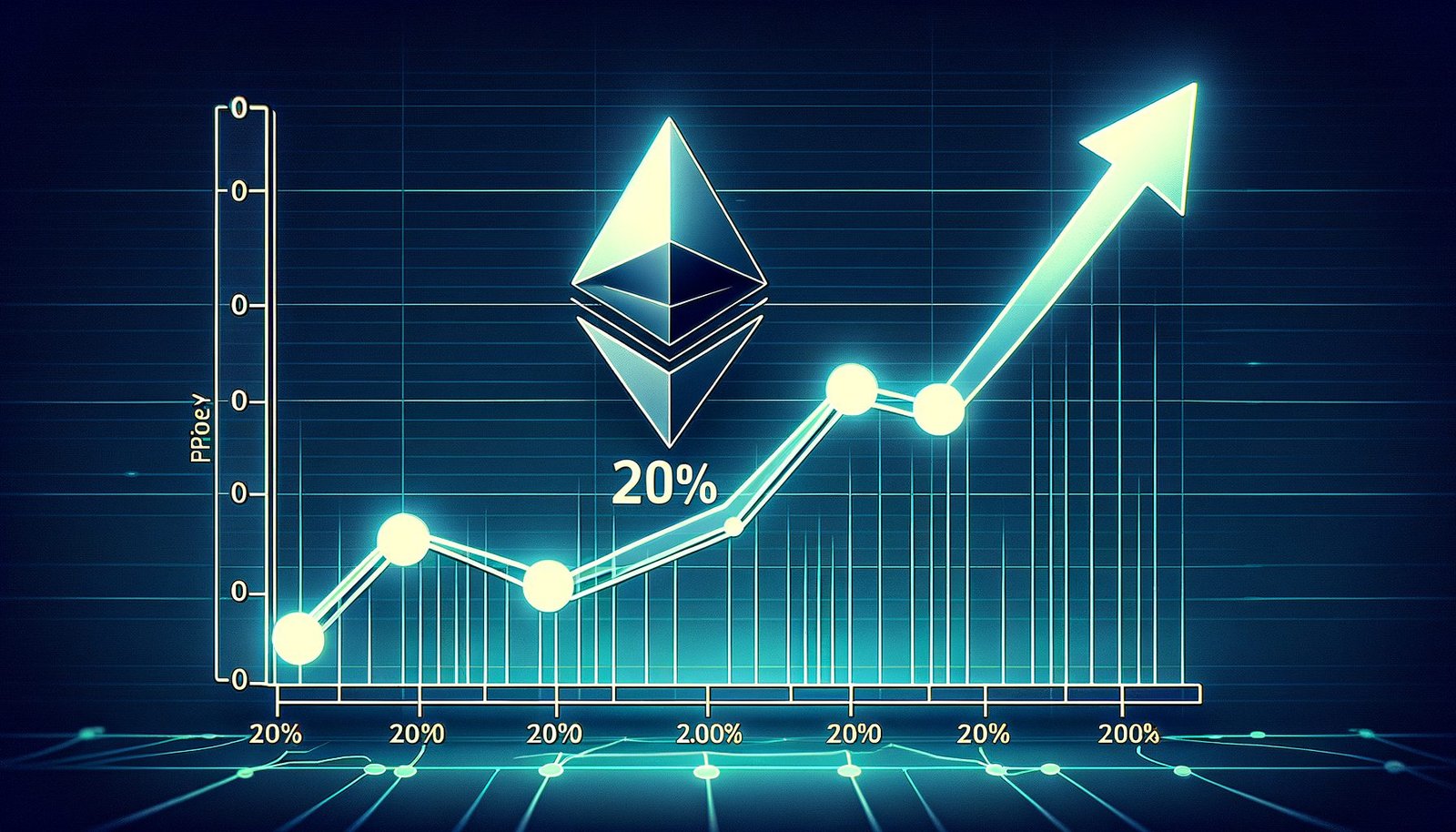Ethereum price surge, the second-largest Cryptocurrency market in the world by market capitalization, has once again caught the attention of the global digital asset community. Today, Ether (ETH) briefly returned above $2,700, indicating that its price momentum is resurfacing after a few weeks of fluctuation. The current rise in Ether’s value coincides with another significant event: the total amount of staked ETH has reached an all-time high. This strengthens Ethereum’s position in the changing blockchain world.
As Ethereum transitions from its proof-of-work (PoW) consensus method to proof-of-stake (PoS) with Ethereum 2.0, price fluctuations and staking activity have become key indicators of the network’s health and investor sentiment. This essay will discuss the current market developments affecting the price of Ethereum, the growing importance of staked ETH, and how these factors are shaping the future of blockchain technology and decentralized finance (DeFi).
Factors Driving Ethereum’s Price Surge and Market Growth
The current rise in Ethereum’s price is part of a broader trend of increasing prices in the cryptocurrency market. ETH has surged sharply after weeks of price fluctuations, briefly reattaining the $2,700 barrier. There are several reasons for this rise, but the main ones are
More Institutions Are Using Ethereum: Interest in Ethereum from institutions has grown a lot over the past year. Hedge funds, investment firms, and even large companies are investing more money in ETH. This has given a strong base for prices to rise and gain momentum.

Ethereum 2.0 Upgrade and Proof-of-Stake Transition: The long-awaited move to Ethereum 2.0 has also been a significant factor in the price of ETH. More people are investing in Ethereum due to its Proof-of-Stake (PoS) architecture, which promises to make the network more scalable, energy-efficient, and secure. Ethereum 2.0 is projected to significantly reduce energy consumption, establishing ETH as a more sustainable investment compared to proof-of-work-based cryptocurrencies like Bitcoin.
More and more people are using DeFi: The DeFi ecosystem, primarily built on the Ethereum blockchain, is growing at an incredible rate. Ether is isdue to the increasing number of decentralized applications and centralized and decentralized exchanges (DEXs) on Ethereum. The price of ETH is also increasing as more people want to use it as a transaction gas on these platforms.
Ethereum’s Transition to Proof-of-Stake
Not only has Ethereum’s switch to proof-of-stake altered its pricing, but it has also transformed the entire Ethereum ecosystem. In the Proof-of-Stake (PoS) system, validators replace miners in adding new blocks to the blockchain and confirming transactions. Users must stake 32 ETH to become a validator. This system encourages validators to act honestly and keeps the network safe and decentralized.
The quantity of staked ETH continues to increase as Ethereum’s PoS network becomes stronger. Recent data show that over 16 million ETH is currently staked, which represents a significant portion of Ethereum’s total circulating supply. This reflects a rising confidence in the network’s future as the Ethereum 2.0 upgrade continues to unfold.
Staked ETH: Incentives and Security
There are several reasons why staked ETH has increased in value, but one of the most significant is the benefits provided to validators. Users can receive incentives in the form of more Ether by staking ETH. Depending on the number of users and network conditions, the current annual staking payouts are estimated to be between 4% and 6%. This makes staking ETH a suitable choice for long-term investors seeking to generate income without active involvement, while still supporting the Ethereum network.
Additionally, staked ETH is crucial for maintaining the Ethereum blockchain’s security and decentralization. Validators play an essential role in maintaining the blockchain’s openness, security, and resistance to hacking, which further solidifies Ethereum’s position as a leader in the blockchain market.
Impact of ETH Staking on Scarcity
Staking ETH also has effects on the Ethereum ecosystem as a whole. This can make ETH more scarce, which in turn can push the price up. Staked ETH is also crucial for Ethereum’s scalability solutions, such as sharding, which aims to increase transaction capacity and lower gas prices.
The increase of staked ETH also has crucial consequences for Ethereum’s broader governance. Validators are the people who check transactions and make sure the network stays secure. This decentralized approach to decision-making keeps the Ethereum community-driven, which strengthens its status as the most decentralized smart contract platform in the blockchain ecosystem.
Final thoughts
Ethereum’s future looks bright as it continues to change and grow. Several significant changes are forthcoming. The Ethereum Price community is still working on improving the network, including scalability solutions such as sharding and the ongoing fine-tuning of Ethereum 2.0. These improvements should make the network faster, cut transaction fees, and make it even more appealing for Web3 and decentralized financial initiatives.
There is still a good chance that the price of Ethereum will increase further if it can stay the best innovative contract platform and continue to come up with new ideas. Therefore, Ethereum’s future appears to depend significantly on the continued growth and improvement of blockchain-based financial systems, as well as their ability to contribute to transforming the global economy.



